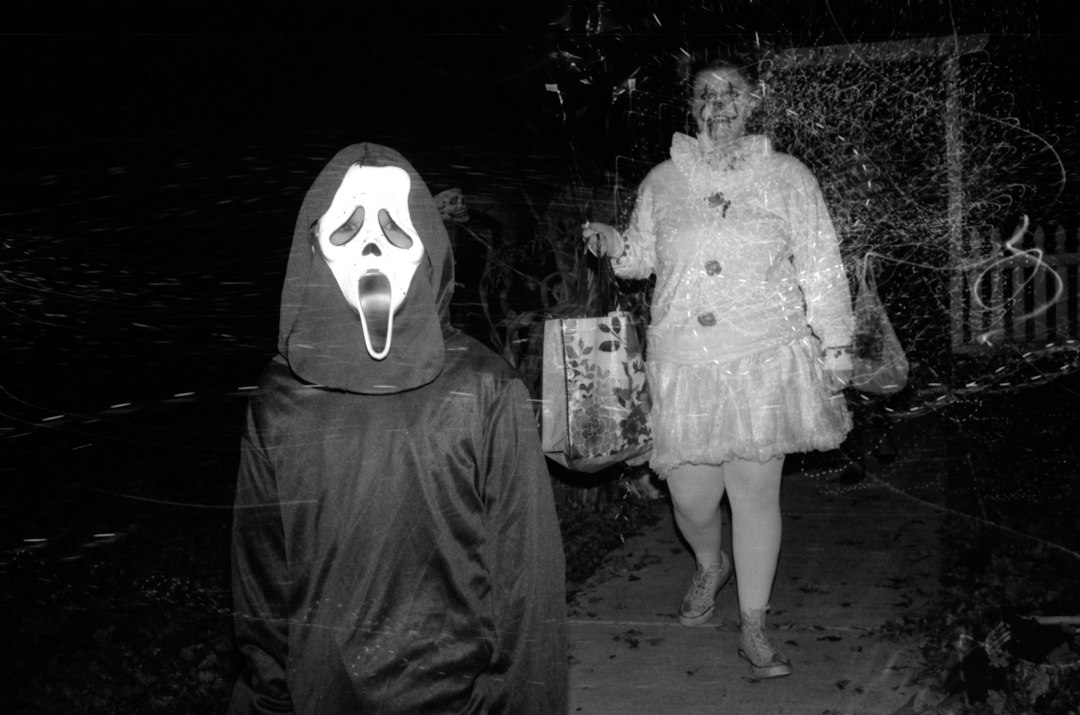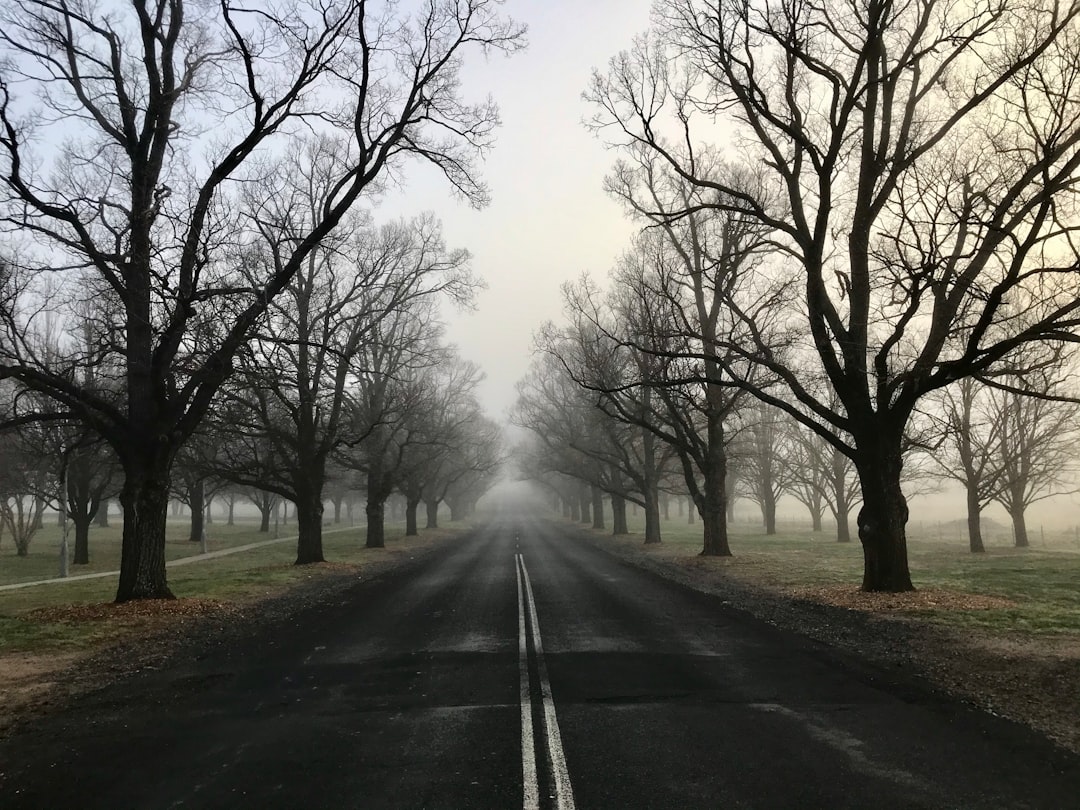The Killer in the Backseat urban legend is a chilling tale that has been passed down through generations. It tells the story of a woman who is driving alone at night when she notices a car following her. Terrified, she speeds up and tries to lose the car, but it continues to pursue her. Eventually, she pulls into a gas station or a well-lit area and the driver of the car behind her approaches her vehicle. To her horror, he informs her that there is a man hiding in her backseat, ready to attack her. This urban legend has captivated audiences for years and continues to be shared as a cautionary tale.
Studying urban legends is important because they provide insight into the fears and anxieties of a society. They often reflect the cultural context in which they originate and can shed light on societal issues and concerns. By examining the origins, variations, and impact of urban legends, we can gain a better understanding of human psychology and the power of storytelling.
Key Takeaways
- The Killer in the Backseat Urban Legend originated in the 1960s and has since evolved over time.
- The story typically involves a woman driving alone at night and being followed by a car with a killer in the backseat.
- The urban legend appeals to our fear of vulnerability and the unknown.
- Real-life incidents, such as the Ted Bundy murders, resemble the urban legend and may have contributed to its spread.
- The media has played a significant role in spreading and perpetuating the urban legend, often through sensationalized news stories.
- Critical thinking is essential in evaluating urban legends and separating fact from fiction.
- Debunking the myths surrounding the Killer in the Backseat Urban Legend can help prevent unnecessary fear and panic.
- The legacy of the urban legend serves as a cautionary tale about the power of storytelling and the impact of fear on society.
The Origins of the Killer in the Backseat Urban Legend
The origins of the Killer in the Backseat urban legend are difficult to trace, as it has been passed down through oral tradition for many years. However, there are several possible origins for this chilling tale. One theory suggests that it may have originated from real-life incidents of women being attacked while driving alone at night. These incidents may have been exaggerated or distorted over time, eventually becoming the basis for the urban legend.
Another theory suggests that the legend may have been inspired by similar stories found in folklore and literature. For example, there are tales in which a person is pursued by a malevolent force or an unknown assailant. These stories may have served as inspiration for the Killer in the Backseat legend.
The historical context of the Killer in the Backseat legend is also important to consider. The legend gained popularity during a time when women were increasingly entering the workforce and becoming more independent. This may have tapped into fears and anxieties surrounding women’s safety and the dangers they faced when venturing out alone.
The Most Common Versions of the Story
The Killer in the Backseat urban legend has many variations, but there are a few common themes that appear in most versions of the story. In one popular version, a woman is driving alone at night when she notices a car following her. She becomes increasingly frightened and tries to lose the car, but it continues to pursue her. Eventually, she pulls into a gas station or a well-lit area and the driver of the car behind her approaches her vehicle. To her horror, he informs her that there is a man hiding in her backseat, ready to attack her.
Variations of the legend can be found in different cultures around the world. In some versions, the woman is driving with her children in the car and is warned by another driver about the danger in her backseat. In other versions, the woman is not driving alone but is accompanied by a friend or family member who notices the danger. These variations highlight the universal fear of being pursued or attacked while vulnerable and alone.
The Psychological Appeal of the Urban Legend
| Psychological Appeal of Urban Legends | Metrics |
|---|---|
| Emotional Response | Increased heart rate, sweating, and fear |
| Social Connection | Shared experiences and sense of belonging |
| Curiosity | Desire to know more and solve mysteries |
| Confirmation Bias | Belief in information that confirms pre-existing beliefs |
| Entertainment | Enjoyment of being scared or amused |
The Killer in the Backseat urban legend has a strong psychological appeal that has contributed to its enduring popularity. One reason for its appeal is that it taps into our primal fears and anxieties. The idea of being pursued by an unknown assailant while vulnerable and alone strikes at the core of our survival instincts. It triggers our fight-or-flight response and elicits a strong emotional reaction.
Additionally, the legend plays on our fear of the unknown. The idea that someone could be hiding in our backseat without our knowledge is deeply unsettling. It challenges our sense of control and safety, reminding us that danger can lurk in unexpected places.
Furthermore, the legend serves as a cautionary tale, warning us about the potential dangers of the world. It reinforces the idea that we should always be vigilant and aware of our surroundings, especially when we are alone. This message resonates with people and reinforces their existing fears and anxieties.
Real-Life Incidents that Resemble the Urban Legend
While the Killer in the Backseat urban legend is just that – a legend – there have been real-life incidents that bear some resemblance to the story. These incidents serve as a reminder that while the legend may be exaggerated or fictionalized, there is still a basis in reality.
One such incident occurred in 1964 when a woman named Kitty Genovese was brutally attacked and murdered outside her apartment building in New York City. The case gained national attention because it was reported that 38 witnesses heard or saw the attack but did nothing to intervene or call for help. This incident highlights the bystander effect and the fear of getting involved in a dangerous situation.
Another incident that resembles the urban legend occurred in 2014 when a woman in California noticed a man hiding in her backseat while she was driving. She managed to escape unharmed, but the incident serves as a chilling reminder that danger can sometimes be closer than we think.
The Role of Media in Spreading the Urban Legend

The Killer in the Backseat urban legend has been spread and perpetuated through various forms of media over the years. In the past, it was primarily shared through word of mouth, with people telling the story to friends and family members. However, with the advent of technology and mass media, the legend has been able to reach a wider audience.
Movies, television shows, and books have all played a role in spreading the legend. For example, there have been several films that feature a similar premise, such as “Urban Legend” and “I Know What You Did Last Summer.” These movies capitalize on the fear and suspense associated with the legend, further perpetuating its popularity.
The internet has also played a significant role in spreading the legend. Websites, forums, and social media platforms have made it easier than ever for people to share stories and urban legends. The Killer in the Backseat legend has been shared and discussed on various online platforms, reaching a global audience.
The Evolution of the Urban Legend Over Time
Like many urban legends, the Killer in the Backseat legend has evolved and changed over time. As it has been passed down through generations, new details and variations have been added to the story. These changes reflect the cultural context in which the legend is being told and can provide insight into societal fears and anxieties.
One notable change in the legend is the role of technology. In earlier versions of the story, the woman is driving alone at night without any means of communication or assistance. However, in more recent versions, she is often depicted as having a cell phone or other device that she can use to call for help. This change reflects the increasing reliance on technology in our daily lives and the belief that it can provide a sense of security.
Another change in the legend is the portrayal of the woman. In earlier versions, she is often depicted as a helpless victim who is unable to defend herself. However, in more recent versions, she is often portrayed as resourceful and able to outsmart her attacker. This change reflects society’s evolving views on gender roles and empowerment.
The Impact of the Urban Legend on Society
The Killer in the Backseat urban legend has had a significant impact on society. It has become ingrained in popular culture and has influenced how people perceive and navigate their surroundings. The legend has also shaped societal attitudes towards safety and personal security.
One way in which the legend has impacted society is by reinforcing existing fears and anxieties. The story serves as a cautionary tale, reminding people to be vigilant and aware of their surroundings. It reinforces the belief that danger can strike at any moment and that we must always be prepared.
Additionally, the legend has influenced how people approach personal safety. It has led to the development of safety measures such as car alarms, self-defense classes, and neighborhood watch programs. These measures are often seen as a way to protect oneself from potential dangers, echoing the themes of the urban legend.
Debunking the Myths Surrounding the Urban Legend
Despite its enduring popularity, there are several myths and misconceptions surrounding the Killer in the Backseat urban legend. One common myth is that the legend is based on a true story. While there have been real-life incidents that bear some resemblance to the legend, there is no concrete evidence to suggest that it is based on a specific event.
Another myth is that the legend is meant to be a warning about the dangers of hitchhiking. While hitchhiking can be dangerous, especially for women, the Killer in the Backseat legend is not specifically about hitchhiking. It is a cautionary tale about being aware of one’s surroundings and taking precautions when driving alone at night.
It is important to debunk these myths and misconceptions surrounding the legend in order to separate fact from fiction. By understanding the true origins and purpose of the legend, we can gain a better understanding of its cultural significance.
The Importance of Critical Thinking in Evaluating Urban Legends
The Killer in the Backseat urban legend serves as a reminder of the importance of critical thinking when evaluating urban legends. It is easy to be swept up in the suspense and fear associated with these stories, but it is important to approach them with a skeptical mindset.
One way to evaluate the truthfulness of an urban legend is to examine the evidence and research surrounding it. In the case of the Killer in the Backseat legend, there is no concrete evidence to suggest that it is based on a true story. By examining the facts and looking for credible sources, we can separate fact from fiction.
It is also important to consider the cultural context in which the legend originated. By understanding the historical and social factors that may have influenced the legend, we can gain a better understanding of its purpose and significance.
The Legacy of the Killer in the Backseat Urban Legend
The Killer in the Backseat urban legend has left a lasting impact on society. It has become one of the most well-known and enduring urban legends, captivating audiences for generations. The legend’s legacy can be seen in its continued popularity and its influence on popular culture.
The legend has been referenced and parodied in various forms of media, including movies, television shows, and books. It has become a part of our collective consciousness and has shaped how we perceive and navigate our surroundings.
Furthermore, the legend’s legacy can be seen in the continued fascination with urban legends as a whole. The Killer in the Backseat legend serves as a reminder of the power of storytelling and the enduring appeal of these tales.
The Killer in the Backseat urban legend is a chilling tale that has captivated audiences for years. By examining its origins, variations, and impact, we can gain a better understanding of human psychology and the power of storytelling. The legend’s enduring popularity serves as a reminder of our primal fears and anxieties, as well as our fascination with the unknown. While it may be fictionalized or exaggerated, the legend continues to resonate with audiences and serves as a cautionary tale about personal safety.
FAQs
What is “The Killer in the Backseat”?
“The Killer in the Backseat” is a common urban legend that involves a driver who is being followed by another car. The driver is then alerted by a passerby or a police officer that there is a killer hiding in the backseat of their car.
Is “The Killer in the Backseat” a true story?
No, “The Killer in the Backseat” is an urban legend and has no basis in fact. It is a fictional story that has been passed down through generations.
Where did “The Killer in the Backseat” originate?
The origin of “The Killer in the Backseat” is unknown, but it is believed to have originated in the United States in the mid-20th century.
Why do people believe in “The Killer in the Backseat”?
People believe in “The Killer in the Backseat” because it plays on their fears of being followed or attacked while driving alone. It is also a cautionary tale that warns people to be aware of their surroundings and to always check their backseat before getting into their car.
Has anyone ever reported a real-life experience of “The Killer in the Backseat”?
There have been no documented cases of “The Killer in the Backseat” actually happening in real life. It remains a fictional story that is used to scare people and raise awareness about personal safety.







